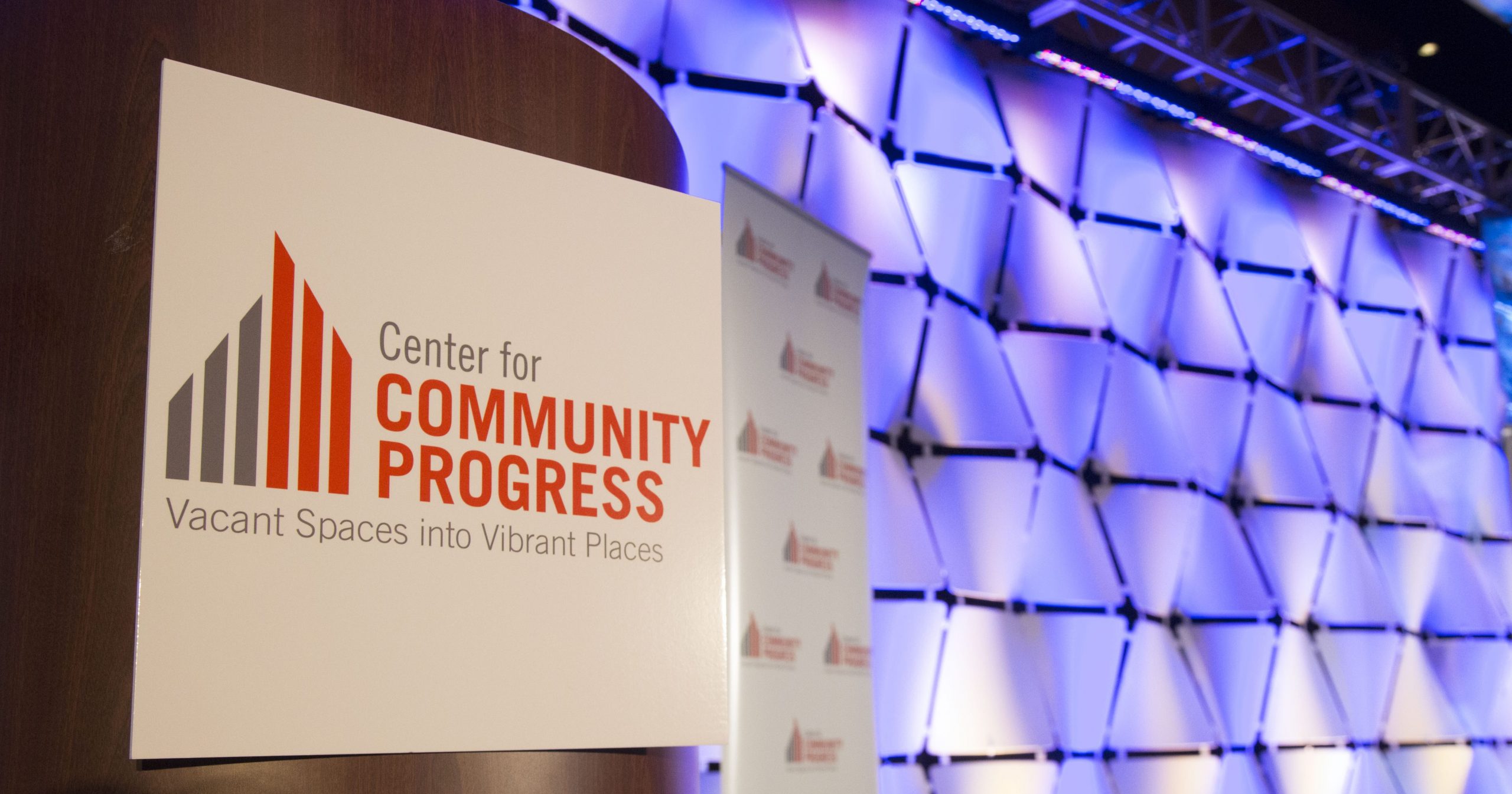President’s Corner: Announcing next steps with gratitude for the past five years
March 7, 2017


Community Progress Friends:
I write today to share the bittersweet news that I will be leaving Community Progress in the summer of 2017 to relocate abroad with my family, due to a unique fellowship opportunity for my husband. Today, the Board of Directors announced these plans and opened the search for a new President and CEO.
The decision to leave Community Progress was a very difficult one for me. I am so grateful to have had the opportunity to work with such passionate and talented colleagues and so many inspiring partners since joining the organization in 2012. Yet I recognize that the opportunity to live in a different country is a rare one. My family and I decided we have to jump at the chance.
As I enter my last few months with Community Progress and begin to think about the adventure that lies ahead, I have also been reflecting on the past five years. I am extremely proud of the work the Center for Community Progress has accomplished.
We often describe ourselves as the only national organization solely focused on tackling the challenges of vacant, abandoned, and deteriorated properties. And while many other organizations that do closely related work might quibble with that characterization, I believe this organization truly is unique in its consistent and committed focus on reforming unjust and inequitable property-related systems and policies that have for too long unfairly burdened many communities, disproportionately low-income residents and people of color, with their devastating impacts.
The work we all do has never been more important. The inequalities in our society, of which these property-related challenges are one key manifestation, are growing and sowing divisions that seem increasingly difficult to repair.
Yet our work has the potential to serve as an important bridge.
For example, we have brought together urban and rural communities that may appear to have little in common but are all dealing with the challenges of vacant, abandoned, and deteriorated properties and are united in seeking solutions that will improve the lives of their residents. Our field is also replete with opportunities to work across sectors, strengthening partnerships between those who work on physical revitalization and those who bring their passions to other areas of community development, from public safety and public health to economic development and job growth. In recent years, for example, we have seen growing interest in community-driven plans and projects that reposition vacant properties as opportunities to increase healthy recreational options for residents, support environmental remediation, promote urban manufacturing, and develop land-based businesses from urban agriculture to renewable energy projects.
For the past three years, Center for Community Progress has held a #LoveThatLot campaign on Valentine’s Day, encouraging our partners in communities around the country to highlight successful vacant lot reclamation projects and to show gratitude for those who made them possible. The many photos we receive are a loving reminder of the highly visible results of returning vacant properties to productive use.
Yet the underlying systems and policies that had to be put in place to make these kinds of projects possible are far less visible and often highly complex. They can be hard to bring to life. How do you personalize the dramatic impact that an effective land bank acquisition and disposition policy can have on people’s lives? How can the deep inequities inherent in most delinquent tax enforcement systems be made real and tangible?
I think I am not alone among my colleagues to have found myself increasingly excited about a discussion on the intricacies of code enforcement or the sale of tax liens, only to find my conversation partner politely staring out a window. And yet these systems have a direct and daily impact on the lives of residents in those neighborhoods most impacted. We have worked hard to get better at telling this story, but there is still much room for improvement.
And we must continue highlighting the important on-the-ground impact of this work not just to others, but also to ourselves. In the midst of doing the often daunting and always complicated work of reforming these systems, we sometimes can forget what inspired us to choose this line of work in the first place. I know that I was not the only one whose eyes started to tear up during the opening panel of our most recent Reclaiming Vacant Properties Conference, when we heard the powerful voices of three young people from Baltimore, who care so profoundly about and are such strong advocates for their neighborhoods, reminding us of why we all are committed to this work.
So, as I enter into my final months with the Center for Community Progress, I would like to take a moment to thank all of you who are our partners in this work for making such a difference in your communities. I am honored to have been a part of it, and I look forward to following, celebrating, and supporting all your efforts and successes in the years to come. And, last but not at all least, I would like to thank my talented, dedicated, and passionate colleagues at Community Progress, who are really one-of-a-kind and will continue to make this organization truly special and its work deeply impactful.
Get the latest tools, resources, and educational opportunities to help you end systemic vacancy, delivered to your inbox.
